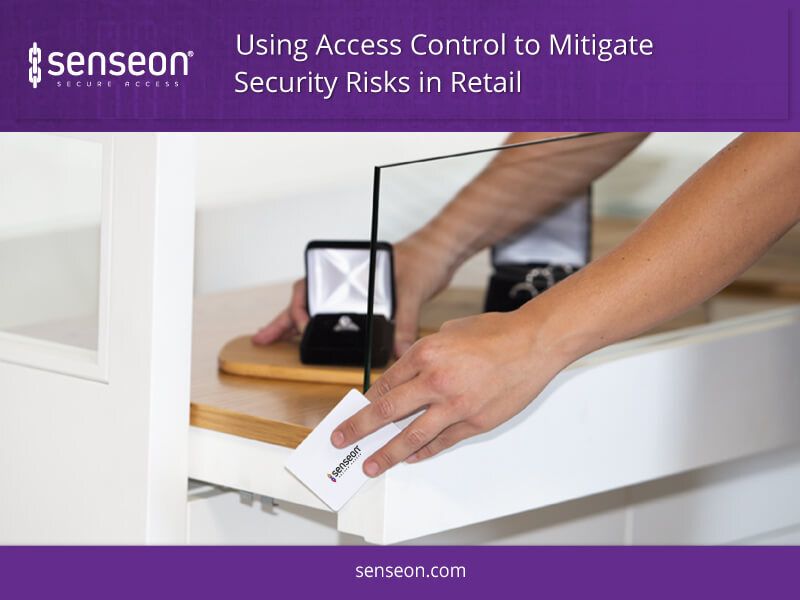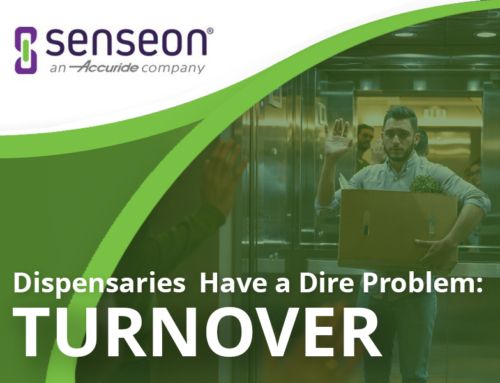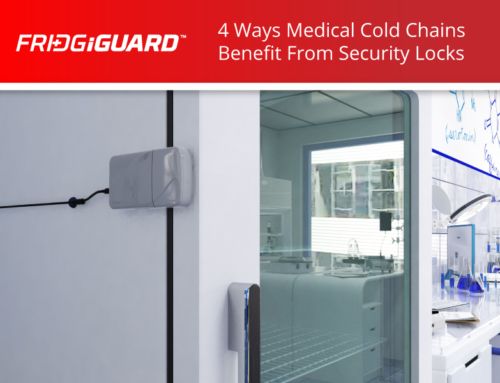Consumer flight to e-commerce is one of the many challenges faced by retail stores in today’s digital environment. Operating expenses, high labor costs, and security also have a direct impact on the bottom line.
Comprehensive security measures shield retailers from a range of concerns, including shoplifters, cybersecurity breaches, and employee turnover. Businesses can now utilize new technologies to protect profits without negatively impacting the customer shopping experience.
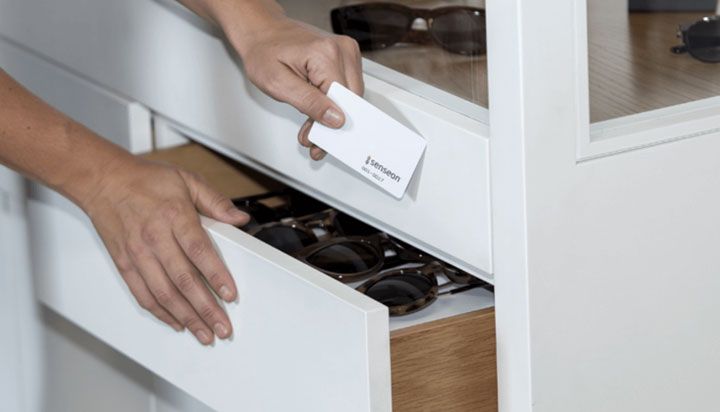
New security technologies, such as Senseon electronic access control, enable business owners to stay one step ahead of thefts and shrinkage and fortify their loss prevention strategies.
Understanding Security Risks in Retail
Shoplifting
Shoplifting is the greatest physical security threat in the retail industry. From lost revenue to replacement costs to other added expenses, in 2018, shoplifting cost retailers $36 billion. While technological innovations have thwarted many common practices, thieves continue to adjust their approach based on these advancements and changing store policies. Anti-theft tags, inventory barcodes, and modifications to packaging are used as deterrents. Other frequently used security measures include bag checks at the exit, alarms, video cameras, and prosecution signage.
Improvements in operational efficiency can also lead to new loss prevention challenges. For example, self-checkouts save money by reducing labor costs, but make it easier for consumers to steal products by failing to scan every item.
Professional crime rings frequently capitalize on technology and policy changes, such as selling stolen goods online. In addition, most businesses now train staff not to pursue a shoplifting suspect outside of the store. Repeat offenders capitalize on these safety precautions, quickly exiting with high-value goods that are easy to offload.
Mitigating Shoplifting
Loss prevention measures address deterrent, preventive, and detective methodologies. Deterrent measures often consist of visible surveillance cameras, prosecution signage, and anti-theft packaging that aim to discourage crime. Preventive measures focus on limiting access to valuable inventory and include security measures such as displaying high-value items in locked cases. Detective measures concentrate on video footage, which facilitates prosecution.
Internal Theft
Internal theft represents nearly half of all losses within retail stores. An internal employee who steals averages about $1,890 in goods stolen. An external shoplifter steals, on average, $438. This exemplifies how critical of an issue employee theft is in loss prevention. Some of the most common ways employees steal from companies include: skimming cash from the register, stealing inventory, and offering free or discounted products to friends and family members.
Additionally, losses can transpire from trusted employees that understand the policies and procedures along with their security vulnerabilities. In these cases, the employee often has access to secure areas and steals for long periods of time before discovery.
Mitigating Internal Theft
Security measures begin with a thorough vetting process for new hires. It also requires establishing policies and procedures that discourage dishonesty and following through with prosecution when theft occurs.
Other effective ways to mitigate losses from internal sources include the separation of duties and audit trails. Never allowing a single employee to manage an entire process reduces the opportunity for theft. For instance, do not have the same person issuing invoices as well as signing checks and enlist two employees to verify all inventory counts. Audit trails can deter theft, prevent losses, and provide data for prosecution. Access control systems with audit trail capabilities, such as Senseon Plus, associate access with the individual, noting the time and date they accessed a secure area. If there is an issue with stolen or missing items, it is easy to identify the break in secure access—or, in some cases, the actual thief.
Cybersecurity
Cybersecurity risks come from two major sources: payment systems and the storage of data for e-commerce sales. Electronic POS payments transmit consumer data through a merchant service provider. Without proper encryption, cyber thieves can steal data transmissions and sell the customer’s account information.
The company database is also vulnerable because it includes consumer data related to loyalty programs, online purchases, and company credit cards. Information can consist of names, addresses, phone numbers, social security numbers, and birthdates, which is enough to steal the identity of the consumer.
Mitigating Cybersecurity Breaches
Protecting cyber data means safeguarding every entry point, including digital entry points. Retailers use computer software, antivirus and malware protection, cybersecurity experts, employee training, and device locks to protect sensitive data. Policies and procedures that restrict download capabilities and train employees to spot cyber threats, such as phishing emails, can also prevent cybersecurity breaches.
Employee Turnover
The average retail store has an annual turnover rate of 65%. Turnover directly increases hiring and training costs. It can also create a security concern when the departing employee has access credentials and knowledge of the company’s security measures.
Mitigating Security Risks Due to Employee Turnover
Electronic access control systems save time and money on key replacement. Physical keys are easy to duplicate and it is expensive to replace locks every time an employee with store access credentials leaves. When an electronic access control system protects storerooms, offices, and display cases, the administrator can secure the entire premises within seconds.
Securing Retail Stores Without Negatively Impacting the Customer Experience
Retailers must provide customer convenience to attract and retain clients. Convenience, however, can create security risks. Customers do not tolerate complicated online log-in processes or waiting for a manager to view high-value items held in display cases. Cumbersome security processes can make customers uncomfortable and dissuade them from frequenting the business.
Thankfully, new technologies can provide security, while actually improving the customer experience.
Video Cameras
The increased use of video technology in homes has desensitized customers to the use of video surveillance in commercial settings. Installing video cameras in strategic locations can deter theft and businesses can use video footage for prosecution purposes.
Access Control Systems
Electronic access control for display cases protects valuables without the use of physical keys. Authorized employees can open cases using contactless RFID technology, creating a seamless customer experience. Adding features such as auto relocking can further protect high-value inventory. Access control for storerooms and offices protects inventory and devices that maintain confidential customer or company data. Customized settings can restrict entry to business hours, require dual authentication by two staff members, or include an audit trail that will record all entry attempts with an individualized code associated with each employee.
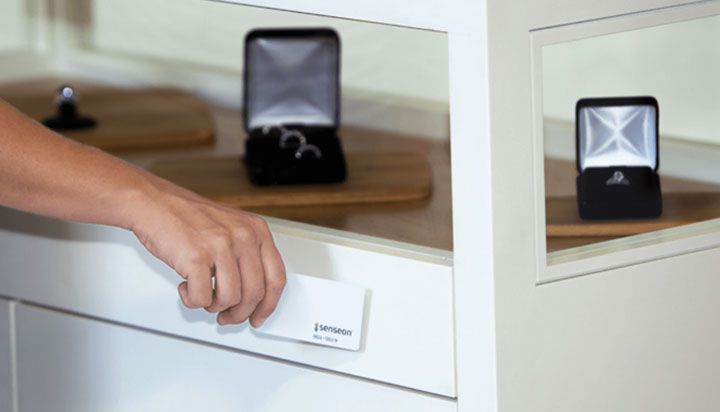
Access control systems like Senseon enable business owners to create a seamless customer experience.
Final Thoughts
Utilizing the latest technologies can increase security without negatively impacting the customer experience. In fact, these technologies can even improve customer experience by creating an appealing retail environment. Furthermore, new technologies address both physical and cybersecurity threats in order to reduce losses within the retail industry.
Senseon specializes in customized cabinet-level access control systems that can protect display cases, cabinets, and drawers. Learn more by visiting our Retail Security page.

